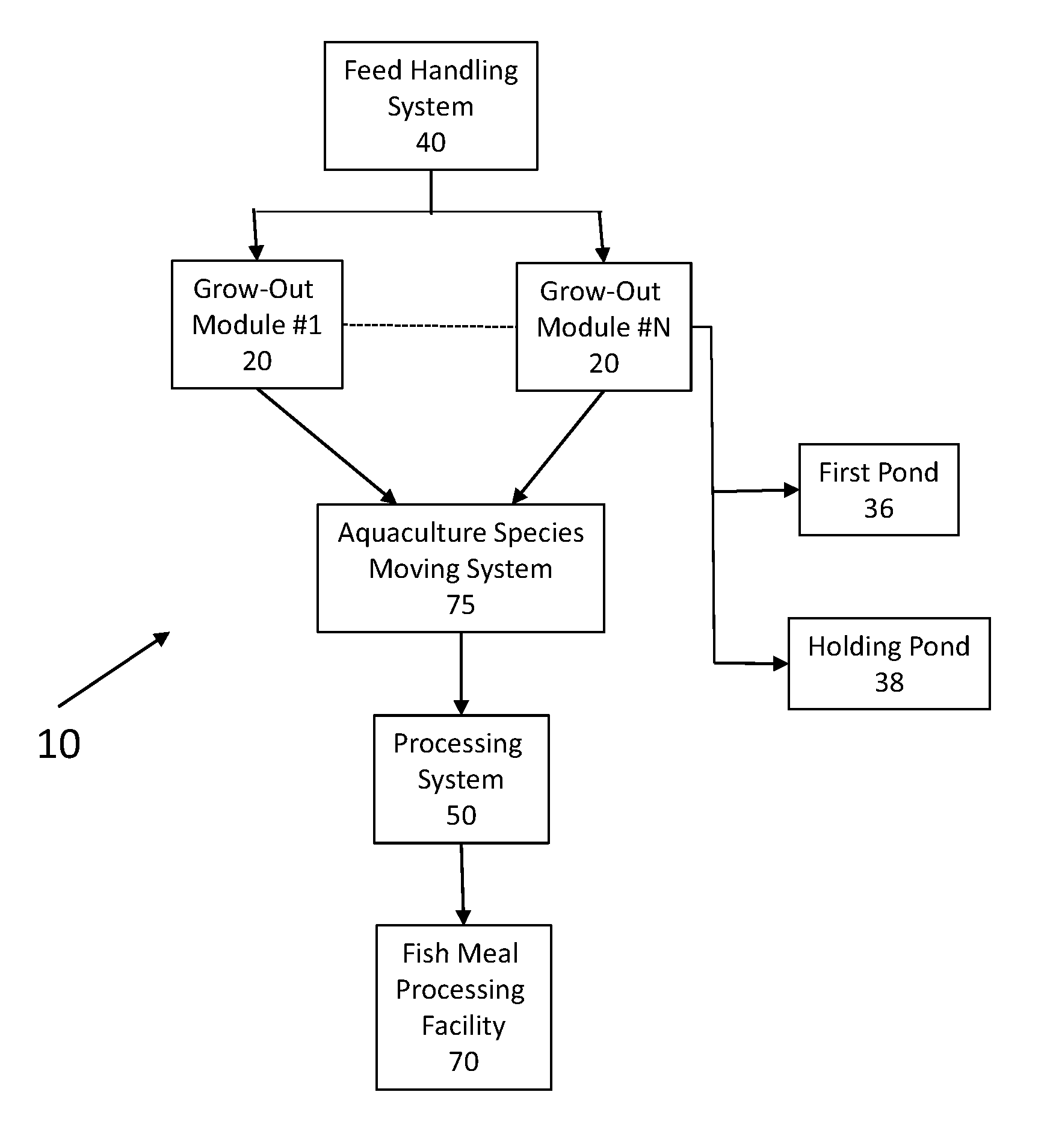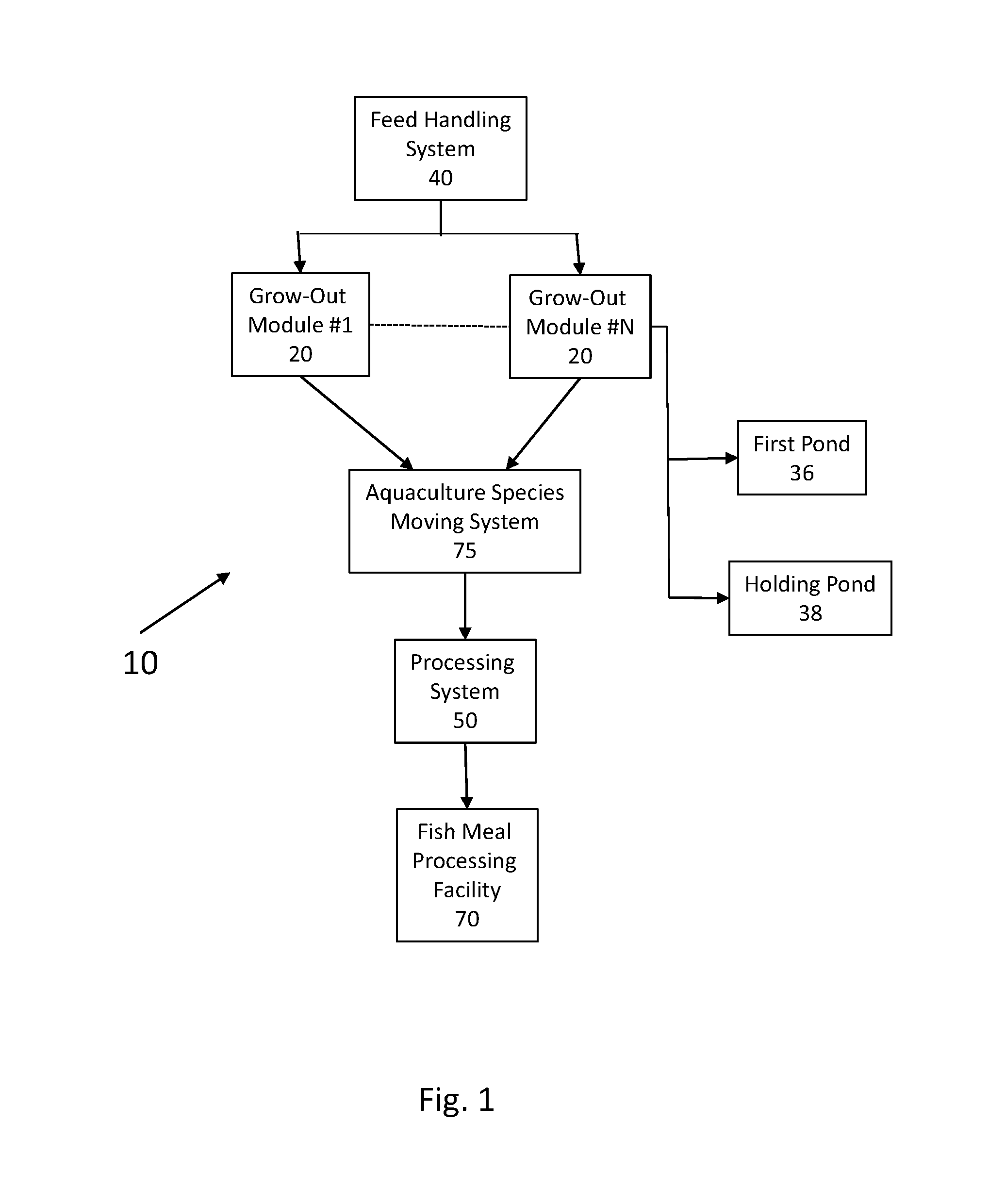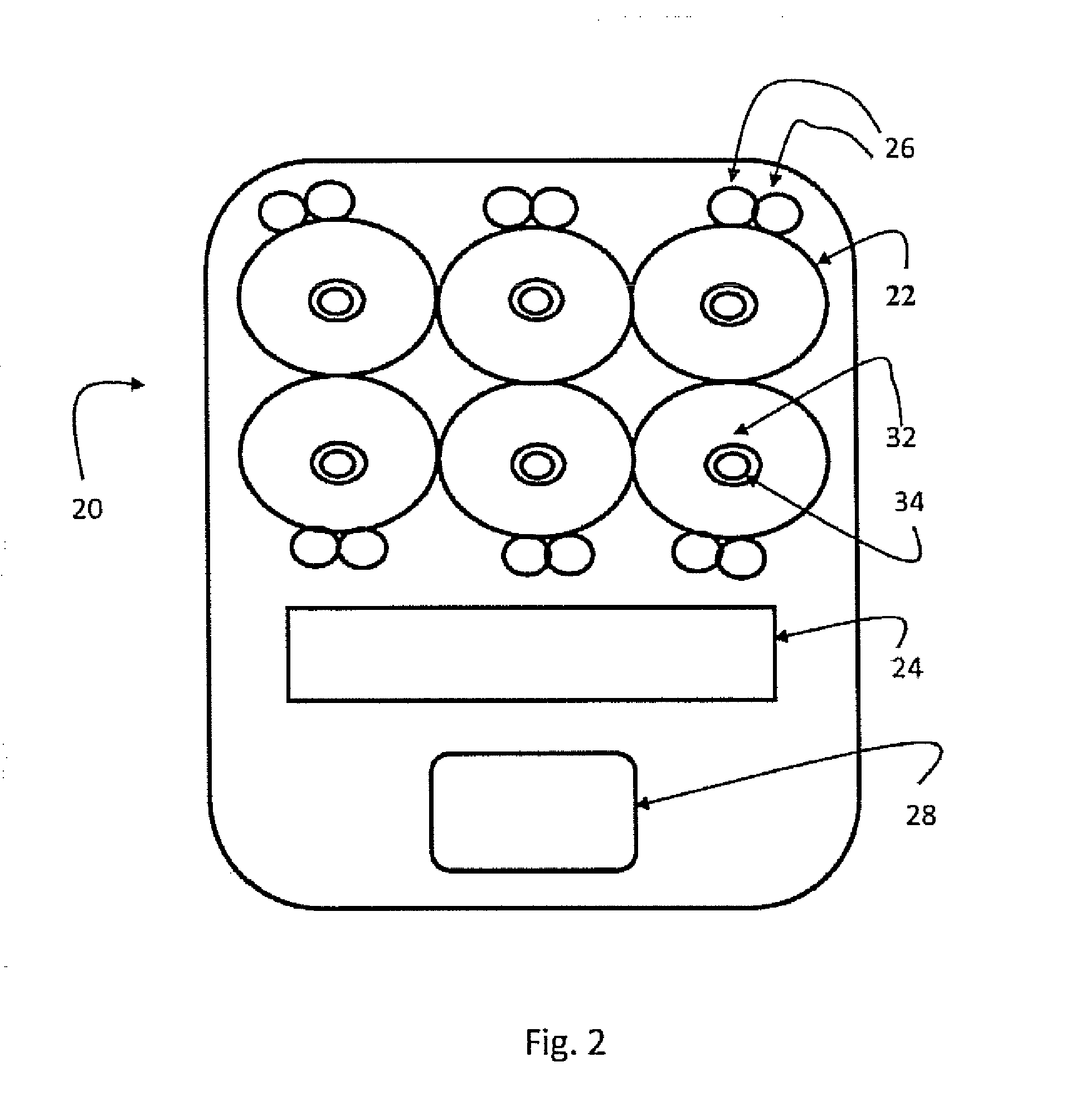Vertically integrated aquaculture system
a vertical integration and aquaculture technology, applied in the field of aquaculture, can solve the problems of increasing the risk of health and environmental concerns of the stock being raised, and achieve the effects of reducing food miles, reducing the degree of quality control, and high utilization of traditional waste products
- Summary
- Abstract
- Description
- Claims
- Application Information
AI Technical Summary
Benefits of technology
Problems solved by technology
Method used
Image
Examples
Embodiment Construction
[0028]With reference now to the drawings, and in particular to FIGS. 1 through 6 thereof, a new Vertically Integrated Aquaculture System embodying the principles and concepts of the present invention and generally designated by the reference numeral 10 will be described.
[0029]The present invention may be described as a highly integrated aquaculture production system, as illustrated in FIGS. 1 through 6. In at least one embodiment, the system includes a collocated feed mill for storing and processing grains into feed, grow-out facilities for at least one aquaculture species, and a processing center for processing the aquaculture species into one or more final product, thereby significantly reducing the food miles associated with the final product.
[0030]At least one preferred embodiment of the present invention is disclosed in the following several paragraphs. It is to be understood that alternate embodiments may provide cost, speed, and / or environmental benefits in particular setting...
PUM
 Login to View More
Login to View More Abstract
Description
Claims
Application Information
 Login to View More
Login to View More - R&D
- Intellectual Property
- Life Sciences
- Materials
- Tech Scout
- Unparalleled Data Quality
- Higher Quality Content
- 60% Fewer Hallucinations
Browse by: Latest US Patents, China's latest patents, Technical Efficacy Thesaurus, Application Domain, Technology Topic, Popular Technical Reports.
© 2025 PatSnap. All rights reserved.Legal|Privacy policy|Modern Slavery Act Transparency Statement|Sitemap|About US| Contact US: help@patsnap.com



